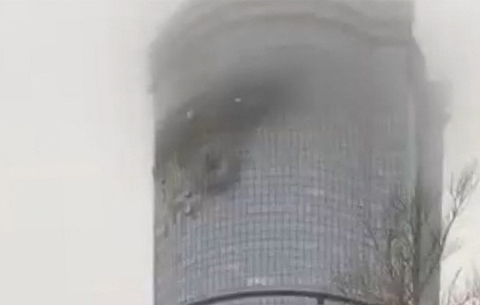Popping the balloon
The new railway station at Budapest's Ferihegy airport, which was recently opened to much fanfare, does little to make the traveller's life easier. Our reporter travelled from Nyugati station in the centre of Budapest to Ferihegy, and discovered that there was less to the new link than met the eye.
In 1994, the press had a laugh at the expense of Gyorgy Schamschula, who had hit on the idea of shoring up the doomed Boross government's popularity by holding new opening ceremonies for each successive 10km of motorway that was built. There were speeches, a ribbon in national colours was snipped - and then the next 10km was built. It was little different on 16 July, when a few guests braved the heatwave to witness the opening ceremony for a new stop on the Budapest-Cegled-Szolnok line, which has been christened Ferihegy. According to the Budapest Transport Alliance, this stop will improve "the accessibility of the airport and the area surrounding it."
If anybody had had some spare time the day after the minister's speech, they could have wondered down to Nyugati station and bought a ticket to the airport. Admittedly, the ticket clerk would have scratched his or her head for a while before finally exclaiming: "Of course! Do you want to take the Monor train or the Szolnok one?" One departs from the station's central platforms, while the other goes from a distant siding - it's a matter of taste, perhaps. They have an uncertain timetable. Sometimes they leave every 10 minutes, at other times you have to wait half an hour. I chose the Szolnok train. It was hard, in that carriage full of honest working men and women, to spot anybody who looked like he was headed straight for Frankfurt or even further afield. And indeed - apart from me, only one young couple got off at Ferihegy - and they were sightseers like me.
On one side of the platform is a road leading to the airport, on the other you see the back gardens of a row of family houses. We head towards Ferihegy, climb a steep staircase, cross the bridge across the road. The stairway and the bridge are roofed over with white plastic. This protects them against the rain - but not against heatwaves. Crossing it, we have the sense of being baked alive. We meet two charming young university students distributing leaflets to help foreigners. Their job cannot have afforded them many opportunities to practice their language skills.
Once across the Bridge of Sighs, the traveller has a choice. He can head to Ferihegy 1, the old airport, which is about 200m away, where the budget airlines fly from, or he can set off to Ferihegy 2, where the majority of flights take off and land. In this case, he has to wait for the 200 bus, which drops him off at the main entrance to the terminal. Of course, he might just as well have boarded this bus at Kobanya-Kispest metro station. Thinking about it, I realise that building a new station on an old, but modernised railway line has saved the traveller neither a single metre nor a single change along his journey to the airport. For that matter, if somebody has luggage but is reluctant to take the taxi or the minibus, he'll be better off taking the metro.
Budapest's suburban transport network has been shamefully neglected since 1989. Instead of implementing clear plans that enjoy the support of the population, new plans are tabled on a regular basis, none of which ever come to fruition. The suburban railway lines have not been linked up with the metro, even though this would have been possible when the number 2 metro line's Ors Vezer ter terminus was rebuilt and new carriages were ordered. The Csepel suburban railway, which was meant to reach Kalvin ter in the 1960s, is now supposed to cross the Danube in some distant future.
The Ferihegy railway is the most confused of the lot. Instead of getting on with it, they tried to fob off the public with this token 'station'. The two airports could easily be linked up with the city by extending the number 3 metro onwards from Kobanya-Kispest. (We have no luck with this line, built in the last decade of "existing socialism" - there are no plans to extend it either north or south, despite feverish speculative property investment along various proposed routes.)
There is no need for a third railway line to the airport. There is no need for an extraordinary expensive high speed line. It would be enough to extend the metro. Unfortunately, this would conflict with the interests of certain investors. These developers would like to receive vast subsidies for grandiose plans. Who knows when they'll manage to ram their project through, and how much this will cost Hungarian taxpayers? Until then, we'll reach Ferihegy as best we can - by car, by taxi, on the tube, or on the bus. If possible, however, avoid the train, especially during a heatwave.
János Pelle









